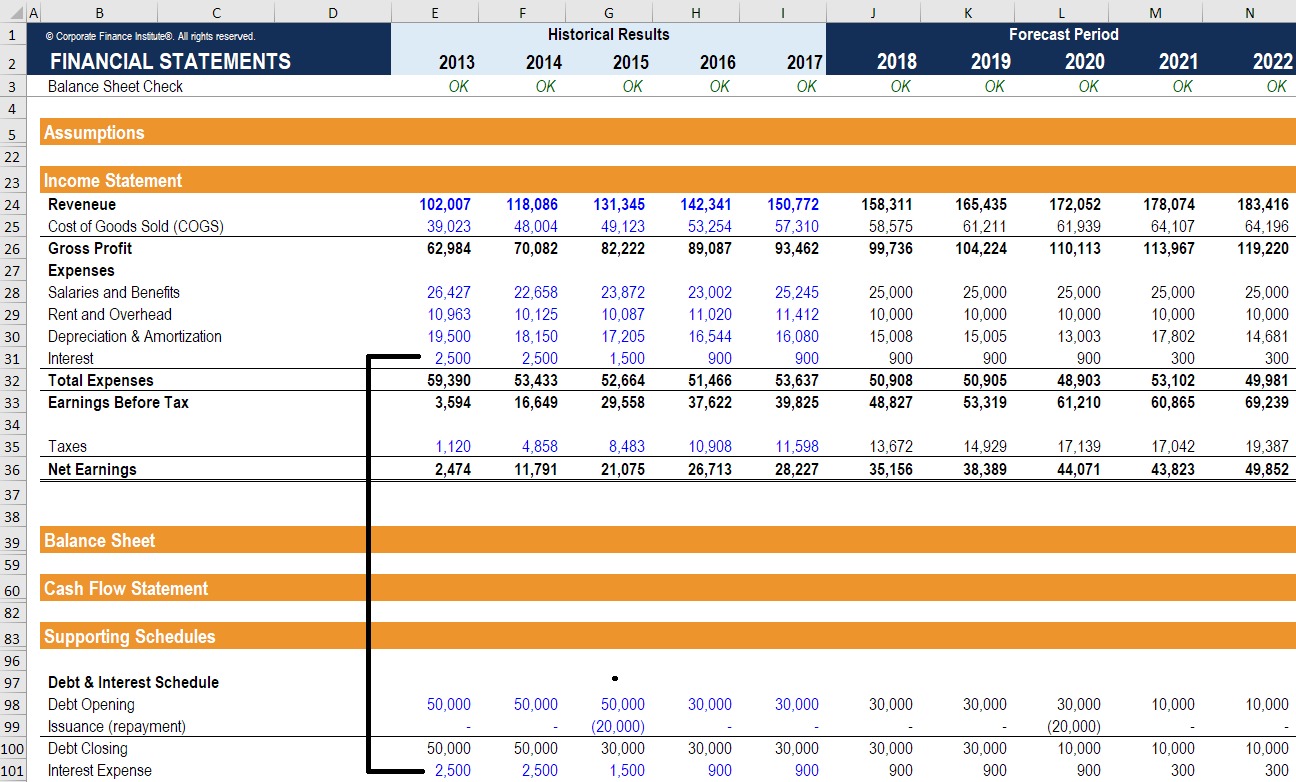

Finance
How Do Stock Buyouts Work
Modified: December 30, 2023
Discover how stock buyouts work in the field of finance and learn the intricacies behind this impactful investment strategy.
(Many of the links in this article redirect to a specific reviewed product. Your purchase of these products through affiliate links helps to generate commission for LiveWell, at no extra cost. Learn more)
Table of Contents
Introduction
In the world of finance, stock buyouts are a common occurrence. They represent a strategic decision made by companies to acquire the outstanding shares of another company’s stock, often with the aim of gaining control or expanding their market presence. Stock buyouts, also known as mergers and acquisitions or M&A, play a crucial role in shaping the dynamics of the financial industry and can have a significant impact on the parties involved, as well as the broader market.
In a stock buyout, one company purchases the shares of another company, which can be done either through a cash transaction or by offering stock of the acquiring company as consideration. This process is typically carried out with the approval of both companies’ boards of directors and is subject to various regulatory requirements.
Stock buyouts can take a variety of forms, ranging from friendly acquisitions, where the target company willingly agrees to the transaction, to hostile takeovers, where the acquiring company pursues the purchase against the wishes of the target company’s management. Regardless of the nature of the buyout, it is important to understand the reasons behind these transactions, the different types of buyouts, and the process involved in executing them.
In this article, we will explore the fascinating world of stock buyouts, shedding light on the reasons companies choose to engage in such transactions, the various types of buyouts, the step-by-step process involved, and the potential benefits and challenges associated with these deals. By understanding the intricacies of stock buyouts, you will be better equipped to navigate the ever-evolving landscape of the financial markets.
Definition of Stock Buyouts
A stock buyout, also known as a merger or acquisition (M&A), refers to the process of one company acquiring the outstanding shares of another company’s stock, resulting in a change of ownership and control. It is a strategic move made by companies to gain a competitive advantage, expand their market presence, or increase shareholder value.
Stock buyouts can either be friendly or hostile. In a friendly buyout, the target company’s management is supportive of the transaction and willingly agrees to the merger or acquisition. This is typically based on mutual agreement and can be beneficial for both the acquiring and target companies. On the other hand, a hostile takeover occurs when the acquiring company purchases the shares of the target company against the wishes of its management and board of directors. Hostile takeovers are often met with resistance and are typically driven by the acquiring company’s desire for control or strategic positioning.
The terms of a stock buyout are usually negotiated between the acquiring company and the target company. The consideration for the buyout can be in the form of cash, stock, or a combination of both. The acquiring company offers a premium on the current market price of the target company’s stock to entice shareholders to sell their shares.
Stock buyouts can have a significant impact on the financial markets, as they can reshape industry landscapes, consolidate market power, and lead to the creation of new entities. They are subject to regulatory approvals and must comply with antitrust laws to prevent monopolistic practices.
Overall, stock buyouts are a complex and strategic process that involves careful financial analysis, due diligence, and negotiation. Successful buyouts can create synergies, enhance profitability, and drive growth for the acquiring company, while offering shareholders of the target company an opportunity to monetize their investment and potentially realize a premium on their shares.
Reasons for Stock Buyouts
Stock buyouts are driven by various strategic and financial motives. Companies engage in these transactions with the goal of achieving specific objectives that can range from gaining market share to diversifying their product offerings. Here are some common reasons for stock buyouts:
1. Market Expansion: One of the primary reasons for stock buyouts is to expand into new markets or geographic regions. By acquiring a company with an established presence in a desired market, the acquiring company can quickly enter and establish itself in that market, saving time and resources compared to building from scratch.
2. Synergies and Cost Savings: Stock buyouts can create synergies by combining the strengths and capabilities of the acquiring and target companies. This synergy can result in cost savings through economies of scale, shared resources, and streamlined operations. For example, eliminating duplicate functions and consolidating supply chain activities can lead to reduced costs and improved efficiency.
3. Diversification: Companies may pursue stock buyouts as a means of diversifying their product or service offerings. By acquiring a company operating in a different industry or sector, the acquiring company can reduce its dependence on a single market or product and broaden its revenue streams. This diversification can help mitigate risks associated with market fluctuations or changes in consumer preferences.
4. Access to New Technologies or Intellectual Property: Another motive for stock buyouts is the desire to gain access to new technologies or intellectual property (IP). Acquiring a company with valuable patents, trademarks, or proprietary technologies can provide the acquiring company with a competitive advantage in the market. It can also accelerate innovation and product development efforts.
5. Vertical Integration: Stock buyouts can facilitate vertical integration, where companies acquire businesses involved in different stages of the supply chain. By vertically integrating, a company can gain control over its inputs or distribution channels, reduce costs, improve coordination, and potentially capture a larger share of the value chain.
6. Financial Performance and Shareholder Value: Stock buyouts are often pursued to enhance financial performance and increase shareholder value. By acquiring a company with strong growth potential or undervalued shares, the acquiring company can unlock value and generate higher returns for its shareholders.
7. Competitive Advantage: Lastly, stock buyouts can be driven by the desire to gain a competitive advantage in the market. By acquiring a competitor, the acquiring company can eliminate competition, increase market share, and strengthen its position in the industry. This can lead to improved bargaining power with suppliers and customers.
Overall, stock buyouts are strategic decisions made by companies based on considerations such as market expansion, synergies, cost savings, diversification, access to new technologies, financial performance, and competitive advantage. By understanding the motivations behind stock buyouts, investors and market participants can better analyze and evaluate the potential impact of these transactions.
Types of Stock Buyouts
Stock buyouts can take on various forms, depending on the specific structure and circumstances of the transaction. These different types of buyouts offer companies flexibility in executing their strategic objectives. Here are some common types of stock buyouts:
- Asset Purchase: In an asset purchase buyout, the acquiring company purchases the assets and liabilities of the target company. This type of buyout allows the acquiring company to selectively acquire the desired assets, such as intellectual property rights, physical assets, or customer contracts, without absorbing the target company’s entire operations or assuming its liabilities.
- Stock Purchase: A stock purchase buyout involves the acquisition of the outstanding shares of the target company’s stock. In this type of buyout, the acquiring company purchases the ownership stake held by the target company’s shareholders. This allows for a more comprehensive transfer of ownership and control.
- Merger: A merger is a type of stock buyout where two companies decide to combine and form a new entity. In a merger, the acquiring company and the target company merge their operations, assets, and liabilities into a single entity. The shareholders of the target company typically receive shares of the new merged entity in exchange for their shares.
- Reverse Merger: In a reverse merger, a private company acquires a publicly traded company. This allows the private company to gain a quick and easier route to become a public company by utilizing the existing public company’s stock listing. The private company essentially acquires the shell of the public company, and the shareholders of the private company become the majority owners of the combined entity.
- Management Buyout: A management buyout (MBO) occurs when the existing management team of a company, often with the support of external investors, acquires the company. This type of buyout provides an opportunity for the management team to take ownership and control of the company, allowing them to implement their strategic vision and potentially unlock value.
- Leveraged Buyout: A leveraged buyout (LBO) is a type of buyout where the acquiring company finances a significant portion of the purchase price using debt. The assets and cash flows of the target company are often used as collateral to secure the debt. The primary goal of an LBO is to generate returns by improving the financial performance and profitability of the target company.
Each type of stock buyout has its own advantages and considerations. The choice of which type to pursue depends on factors such as the strategic objectives of the acquiring company, the nature of the target company’s business, regulatory requirements, and the availability of financing.
It’s important for companies and investors to carefully evaluate the implications and potential risks associated with each type of stock buyout, ensuring that the chosen structure aligns with their overall goals and objectives.
Process of Stock Buyouts
The process of a stock buyout involves several steps, from initial negotiations to the final completion of the transaction. While the specifics may vary depending on the circumstances and parties involved, here is a general overview of the process:
- Strategic Planning and Evaluation: The acquiring company identifies potential target companies that align with their strategic objectives. This involves conducting thorough research and analysis to evaluate the financial health, operations, and market position of the target company.
- Negotiations and Due Diligence: Once a target company has been identified, the acquiring company engages in negotiations with the target company’s management or board of directors to discuss the terms of the buyout. During this stage, due diligence is conducted to verify information provided by the target company and assess any potential risks or liabilities.
- Agreement and Documentation: If the negotiations are successful, both parties enter into a formal agreement, which outlines the terms and conditions of the buyout. This includes details such as the purchase price, the form of consideration, any contingencies, and the timeline for completion.
- Regulatory and Shareholder Approvals: Stock buyouts are subject to regulatory approvals, such as antitrust or competition authority scrutiny, to ensure compliance with laws and regulations. Additionally, shareholders of both the acquiring and target companies typically need to approve the buyout, either through a majority vote or in accordance with the company’s bylaws and applicable regulations.
- Closing the Deal: Once all necessary approvals have been obtained, the buyout is officially closed. This involves the transfer of shares from the target company’s shareholders to the acquiring company. The acquiring company then assumes control of the target company’s assets, operations, and management.
- Integration and Post-Merger Activities: After the completion of the buyout, the acquiring company focuses on integrating the target company into its operations. This includes coordinating business processes, combining systems and technologies, streamlining operations, and implementing any necessary restructuring. The success of the buyout often depends on effective post-merger integration and the realization of synergies.
Throughout the process, it is important for both parties to engage legal and financial advisors to assist in navigating complex legal and financial considerations, as well as to ensure compliance with relevant regulations and laws.
It’s worth noting that the duration of the stock buyout process can vary significantly depending on the complexity of the transaction, the regulatory landscape, and the level of cooperation between the acquiring and target companies. It is crucial for all parties to carefully manage the process and maintain open lines of communication to facilitate a successful and efficient buyout.
Benefits of Stock Buyouts
Stock buyouts can offer various benefits to both the acquiring company and the target company, as well as the shareholders and stakeholders involved. Here are some key advantages of stock buyouts:
1. Synergies and Cost Savings: One of the primary benefits of stock buyouts is the potential for synergies and cost savings. By combining the resources, capabilities, and operations of the acquiring and target companies, efficiencies can be achieved through economies of scale, shared infrastructure, and streamlined processes. This can result in reduced costs, improved profitability, and enhanced competitiveness in the market.
2. Market Consolidation: Stock buyouts can lead to market consolidation by eliminating competition and creating a larger, more dominant entity. This can allow the acquiring company to gain a larger market share, increase pricing power, and strengthen its position within the industry. The consolidated entity may also benefit from improved bargaining power with suppliers and customers.
3. Access to New Markets or Customers: Stock buyouts can provide the acquiring company with access to new markets, customers, or distribution channels. By acquiring a company with an established market presence, the acquiring company can quickly expand its reach and tap into new customer bases. This can accelerate growth and revenue generation for the acquiring company.
4. Diversification of Products or Services: Stock buyouts can enable the acquiring company to diversify its product or service offerings. By acquiring a company operating in a different industry or sector, the acquiring company can reduce its dependence on a single market or product. This diversification can help mitigate risks associated with market fluctuations or changes in consumer preferences.
5. Intellectual Property and Technological Advancement: Stock buyouts can provide the acquiring company with access to valuable intellectual property, patents, technologies, or research and development capabilities. This can enhance the acquiring company’s innovation efforts, accelerate product development, and allow for a competitive edge in the market.
6. Increased Shareholder Value: Successful stock buyouts can generate increased shareholder value. By acquiring a company with growth potential or undervalued shares, the acquiring company can unlock value, drive financial performance, and potentially increase the market value of its shares. This can lead to higher returns for shareholders of both the acquiring and target companies.
7. Strategic Positioning: Stock buyouts can strategically position the acquiring company for long-term success. By acquiring a company that aligns with its strategic vision, the acquiring company can strengthen its market position, broaden its customer base, and expand its capabilities. This can enhance its competitiveness and create opportunities for future growth and profitability.
It is important to note that the realization of these benefits is contingent upon effective post-merger integration and the successful execution of the strategic plan. Challenges and risks may arise during the integration process, so careful planning, diligent execution, and effective communication are essential to leveraging the full benefits of a stock buyout.
Risks and Challenges of Stock Buyouts
While stock buyouts offer various benefits, they also come with risks and challenges that should be carefully considered. Here are some common risks and challenges associated with stock buyouts:
1. Integration Challenges: One of the most significant challenges of stock buyouts is the integration of the acquiring and target companies. Combining different corporate cultures, management styles, and business processes can be complex and time-consuming. Ineffective integration can lead to difficulties in coordinating operations, employee dissatisfaction, and potential disruption to the business.
2. Financial Risks: Acquiring companies may face financial risks when executing a stock buyout. This can include taking on additional debt to finance the purchase, potentially increasing the company’s leverage. If the expected synergies and cost savings do not materialize as anticipated, the acquiring company may not generate the projected financial returns, impacting its financial stability and profitability.
3. Legal and Regulatory Compliance: Stock buyouts are subject to complex legal and regulatory requirements. Failure to comply with these regulations, such as antitrust laws, can result in significant penalties and legal consequences. It is crucial for acquiring companies to conduct thorough due diligence and seek legal counsel to ensure compliance with all applicable laws and obtain necessary approvals.
4. Management and Workforce Integration: Merging the management teams and workforces of the acquiring and target companies can be challenging. Differences in leadership styles, decision-making processes, and company cultures can create conflicts and resistance to change. Effective communication and leadership are essential to address these challenges and ensure a smooth integration process.
5. Loss of Key Personnel: During a stock buyout, key personnel from the target company may choose to leave due to uncertainty or changes in leadership. The departure of key employees can disrupt operations, hinder the realization of synergies, and affect the overall success of the integration process. Retaining and incentivizing key talent is crucial for a successful buyout.
6. Market Volatility and Uncertainty: Stock buyouts can introduce market volatility and uncertainty, as investors and stakeholders react to the potential impact on the companies involved. Stock prices may fluctuate, and customer and supplier relationships may be affected. It is important for acquiring companies to manage communication and provide a clear vision to maintain stakeholder confidence.
7. Failure to Achieve Expected Synergies: One of the primary objectives of a stock buyout is to realize synergies and cost savings. However, the actual achievement of these synergies may fall short of expectations. Challenges in integrating operations, differing business practices, or unforeseen market conditions can impact the ability to achieve the anticipated benefits.
It is crucial for companies engaging in stock buyouts to carefully assess and mitigate these risks and challenges. Thorough due diligence, effective post-merger integration planning, clear communication, and strong leadership are essential in managing these potential pitfalls and increasing the likelihood of a successful buyout.
Examples of Successful Stock Buyouts
Successful stock buyouts have played a significant role in shaping the business landscape and have demonstrated the potential for growth and value creation. Here are a few notable examples of successful stock buyouts:
1. Disney’s Acquisition of Marvel Entertainment: In 2009, The Walt Disney Company acquired Marvel Entertainment, a leading comic book and entertainment company, in a deal worth over $4 billion. This acquisition enabled Disney to expand its portfolio of iconic characters and intellectual property rights, including popular superhero franchises like Marvel’s Avengers and X-Men. The buyout has proven highly successful, with Marvel’s characters driving a significant portion of Disney’s box office success and merchandise sales.
2. Facebook’s Acquisition of Instagram: In 2012, Facebook acquired the photo-sharing platform Instagram for approximately $1 billion. At the time, Instagram had a rapidly growing user base and a unique visual-centric approach to social media. Facebook’s acquisition allowed it to tap into Instagram’s popularity among younger users and strengthen its position in the mobile social media market. Today, Instagram is one of the most popular social media platforms globally, contributing to Facebook’s overall growth and revenue.
3. Exxon’s Acquisition of XTO Energy: In 2010, ExxonMobil, one of the world’s largest oil and gas companies, acquired XTO Energy, a leading natural gas producer, in a stock deal valued at about $31 billion. The acquisition allowed ExxonMobil to significantly expand its natural gas reserves and expertise in hydraulic fracturing (fracking) technology. This strategic move positioned ExxonMobil as a major player in the growing shale gas industry and enhanced its ability to meet the increasing global energy demand.
4. Microsoft’s Acquisition of LinkedIn: In 2016, Microsoft acquired LinkedIn, the world’s largest professional networking platform, for over $26 billion. This acquisition provided Microsoft with access to LinkedIn’s vast user base and professional networking capabilities. It allowed Microsoft to integrate LinkedIn’s features and data into its products and services, such as Microsoft Office and Dynamics 365. This buyout enabled Microsoft to strengthen its position in the business software and services market and further enhance its offerings for professionals.
5. Amazon’s Acquisition of Whole Foods: In 2017, e-commerce giant Amazon acquired Whole Foods Market, a prominent organic grocery chain, for approximately $13.7 billion. This acquisition marked Amazon’s entry into the brick-and-mortar retail space and expanded its influence in the grocery industry. The buyout allowed Amazon to integrate Whole Foods’ physical stores with its online platform, enhancing its delivery and distribution capabilities. It also provided Amazon with access to Whole Foods’ loyal customer base and expertise in the grocery sector.
These successful stock buyouts highlight the value that strategic acquisitions can bring to companies, enabling them to gain market share, expand into new sectors, and enhance their capabilities. However, it is important to note that not all stock buyouts result in success, and each acquisition comes with its own unique challenges and considerations.
Conclusion
Stock buyouts play a crucial role in the world of finance, allowing companies to strategically expand their market presence, gain competitive advantages, and create value for shareholders. These transactions involve the acquisition of a target company’s outstanding shares and can take various forms, such as asset purchases, stock purchases, mergers, and management buyouts.
Stock buyouts offer numerous benefits, including synergies, cost savings, market consolidation, access to new markets or customers, and increased shareholder value. Successfully executed buyouts have transformed industries and led to the growth and success of many companies. However, they also come with risks and challenges, such as integration difficulties, financial risks, regulatory compliance, and management hurdles, among others. Managing these risks and challenges is pivotal to achieving the desired outcomes.
Examples of successful stock buyouts, such as Disney’s acquisition of Marvel Entertainment and Facebook’s acquisition of Instagram, demonstrate the potential for companies to leverage these transactions for growth and value creation. However, it is important to acknowledge that not all buyouts yield the anticipated results, and careful planning, due diligence, and execution are crucial for success.
As the financial landscape continues to evolve, stock buyouts will remain a prominent strategy for companies seeking growth, expansion, and the optimization of shareholder wealth. Understanding the reasons for stock buyouts, the different types, the process involved, and the potential benefits and challenges is essential for investors, executives, and stakeholders who wish to navigate this dynamic and transformative aspect of the financial industry.














